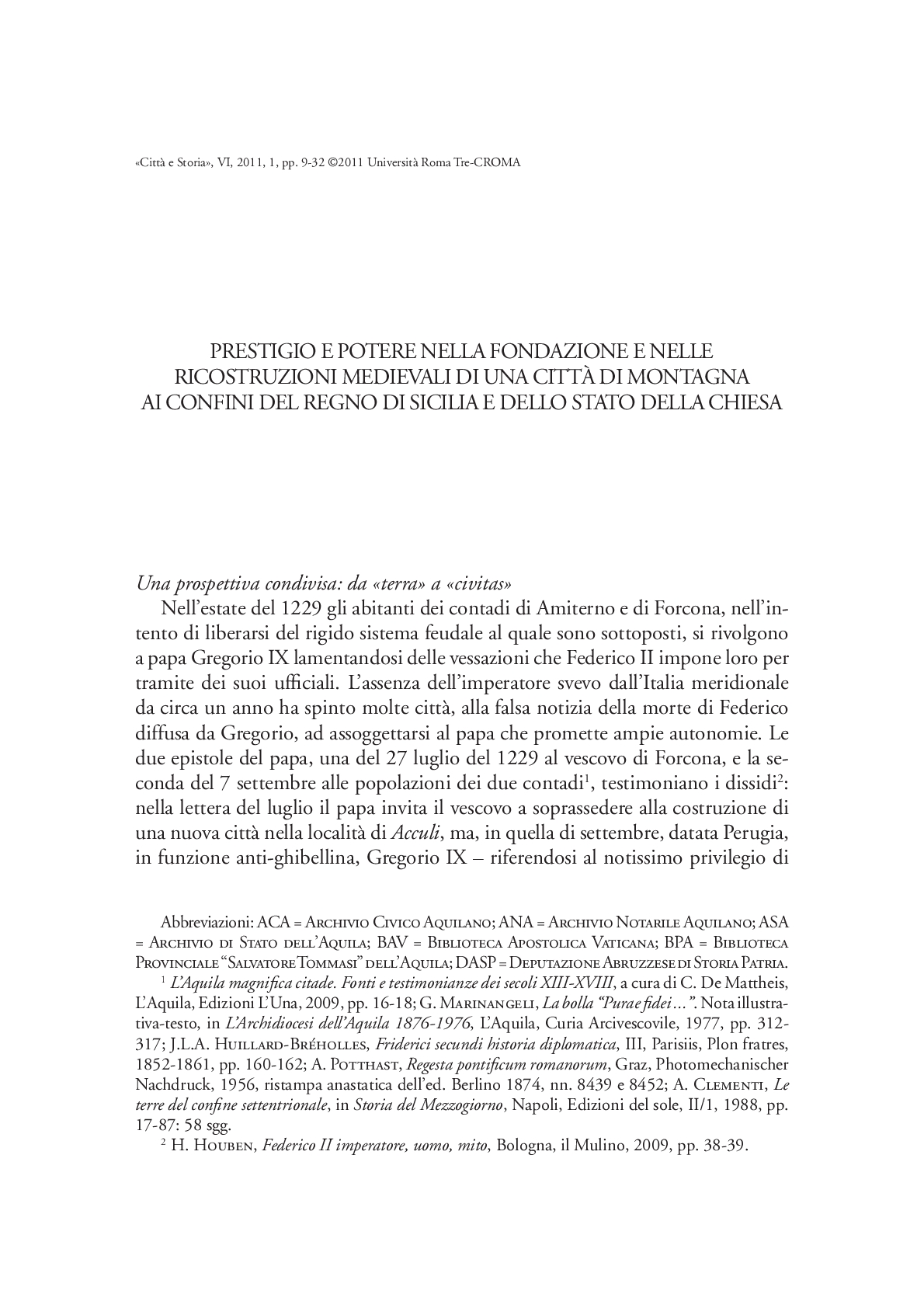Indice degli autori
CITTÀ & STORIA » 2011/1 » L'Aquila oltre i terremoti. Costruzioni e ricostruzioni della città
ISSN 1828-6364
Berardi Maria Rita
Prestigio e potere nella fondazione e nelle ricostruzioni medievali di una città di montagna ai confini del Regno di Sicilia e dello Stato della Chiesa
pp.9-32, DOI 10.17426/23092
Articoli
Abstract: At the northern border of the Kingdom of Sicily, at the death of Federico II, the populations of the two counties Amiterno and Forcona, obtain the recognition of a new urban, economic, political and cultural district from Corrado IV in 1254. It is to be called L’Aquila. The wealthy of approximately 70 centers move to this new urban territory into sites allotted to them, to build the houses, the church and the public fountain in the square fronting it, maintaining the name of the original castle: thus the city becomes a collective entity, while maintaining multiple identities in its focal points, the various parochial churches. Recurring earthquakes are another aspect of the city’s identity. In order to augment and restructure the urban fabric and improve it by means of new strategies, the citizens follow the policy of a sacred identity in the fourteenth century with construction of the complex of Santa Maria di Collemaggio which Pope Celestine V, granting the plenary indulgence «la Perdonanza», included among the pilgrimage destinations, and in the fifteenth century with that of the Osservante. These buildings had great symbolic value because they housed the holy remains of Pietro of Morrone and of Bernardino of Siena and were visited by many merchant-pilgrims during the fairs.

Referenze
- download: n.d.
- Url: http://archivio.centroricercheroma.it/?contenuto=indice-degli-autori&idarticolo=972
- DOI: 10.17426/23092
- citazione: M. Berardi, Prestigio e potere nella fondazione e nelle ricostruzioni medievali di una città di montagna ai confini del Regno di Sicilia e dello Stato della Chiesa, "Città & Storia", VI/1, pp.9-32, DOI: 10.17426/23092

